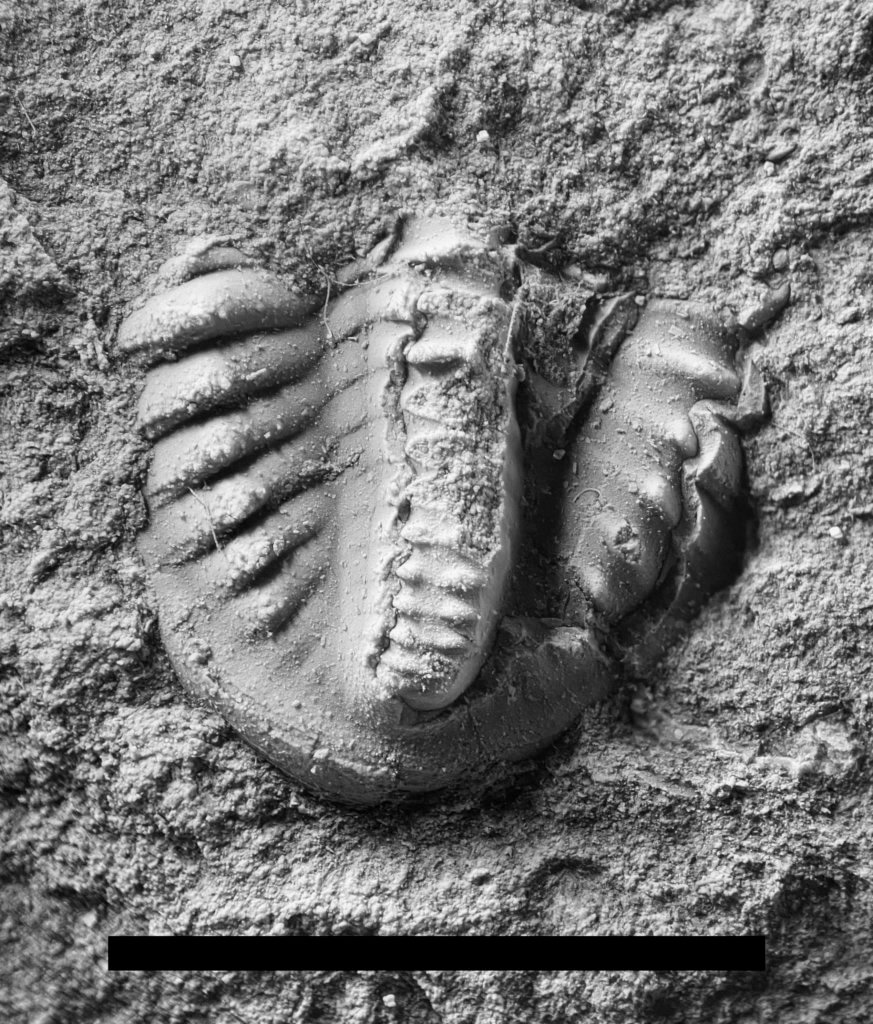Late Pennsylvanian Trilobites consist of only a tiny handful of species. Trilobites were still 50 million years from extinction but were far from their previous size and diversity. Fossil Trilobite finds from this geologic age are tiny, often only 4-6mm in width. Compare that to the largest, 450mm long and weighing over 4 kilograms. So far, I’ve mostly found pygidium specimens, also known as the tail section. The cephalon, or head, appears to be harder to track down. However, I did recover a specimen of the left side of one in 2020.
If you are looking for trilobites in Pennsylvania, the further East you go, the larger the finds tend to be. This is due to the older rocks in the East from when trilobites were in their prime. These western Pennsylvania specimens exist but can be challenging to find due to their tiny size.
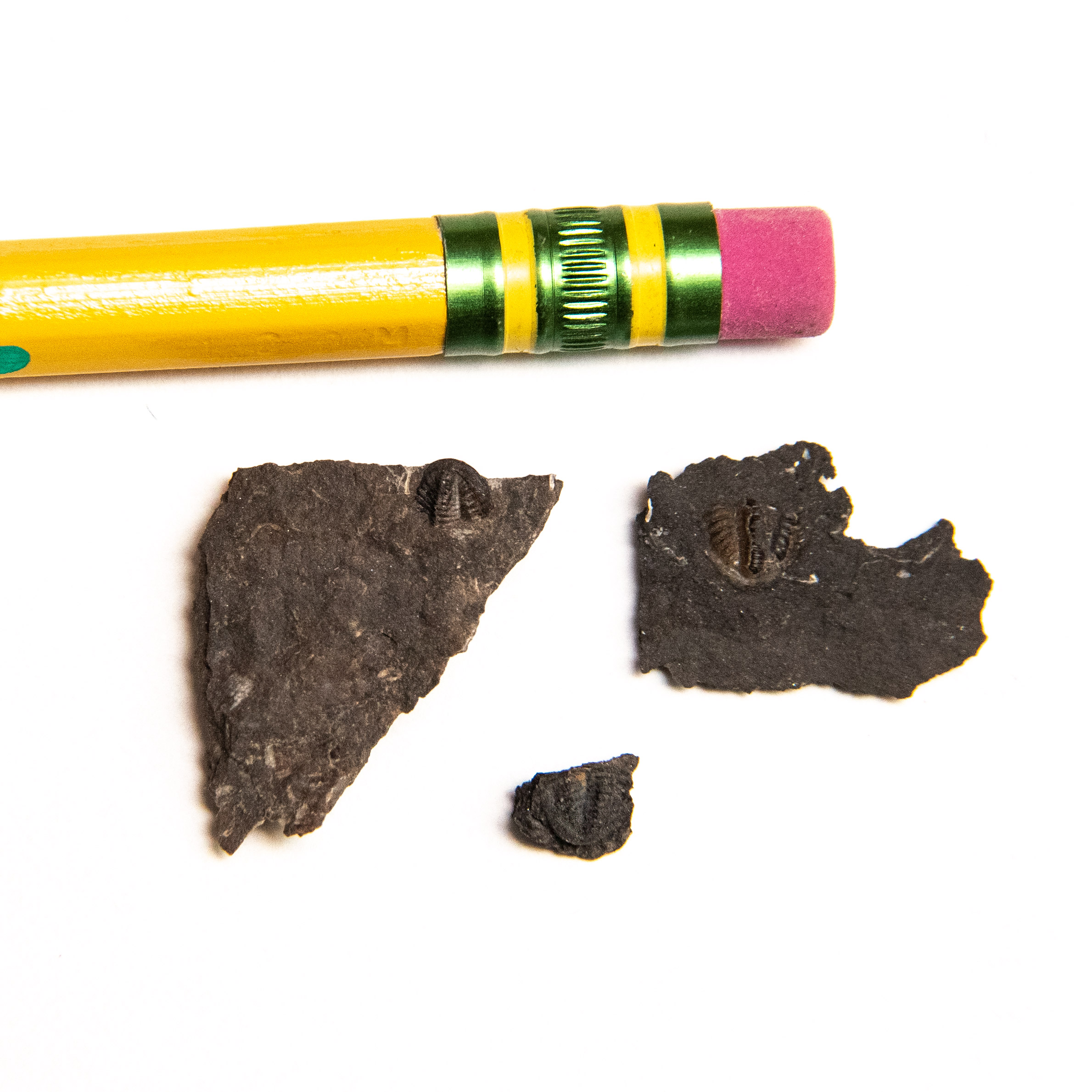
The general distributions of Trilobites in Pennsylvanian rocks, as it pertains to stratigraphy and paleoecology, are not well known (Brezinski 1989). They are a rare find, and I can attest to that. I’ve only found about a half dozen examples over the past two years of searching through local rocks.
Two Late Pennsylvanian Trilobite Species of Interest
| Genus | Species | Described by | Strata Found In |
|---|---|---|---|
| Ameura | missouriensis | (Shumard) | Brush Creek / Pine Creek |
| Ditomopyge | scitula | (Meek & Worthen) | Brush Creek / Pine Creek |
| Ditomopyge | decurtata | (Gheyselinck) | Ames Limestone |
Ameura missouriensis and Ditomopyge scitula are the two species that I have focused on, as they are the only two known to exist where I search. Both extend back in time through the Allegheny and Pottsville formations in Ohio. The state of Ohio is often referenced in research here as the Ohio Geological Survey has spent far more resources researching and writing about paleontology than Pennsylvania.
Morphological Variation
One of the fascinating facts presented in Pennsylvanian Trilobites of Ohio (Report of Investigations No. 142) by D. Brezinski et al. is that Ditomopyge scitula exhibits proven morphological variation across the strata. From the Pottsville Formation through the Allegheny Formation until the later Conemaugh Formation, the average width of the Pygidal drops from nearly 8mm to below 6mm. This width also drops by 2mm.
Trilobite Temporal Range


Carboniferous / Permian Trilobite Anatomy
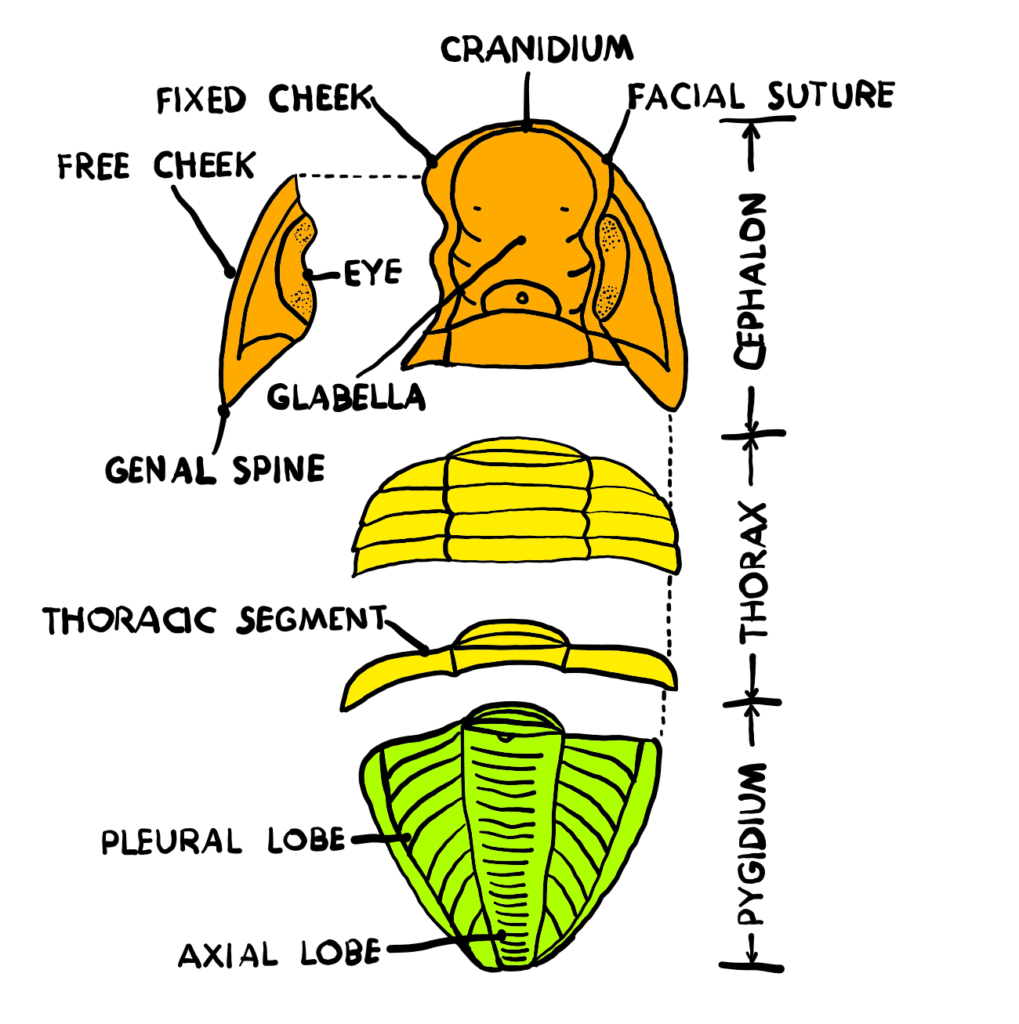
Carboniferous Trilobite Specimens
Below are several specimens I have collected locally in the Brush Creek limestone and the Pine Creek limestone. The Pine Creek specimens tend to be more complete; however, the free/fixed cheek that I found was from Brush Creek limestone.
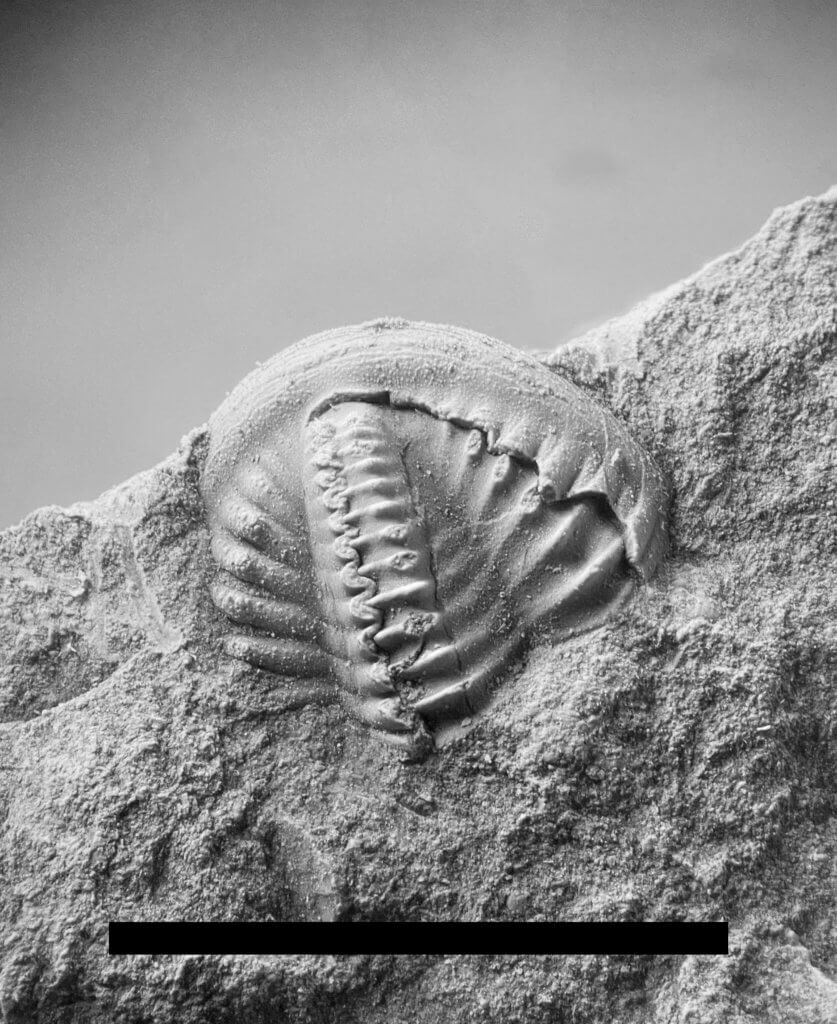

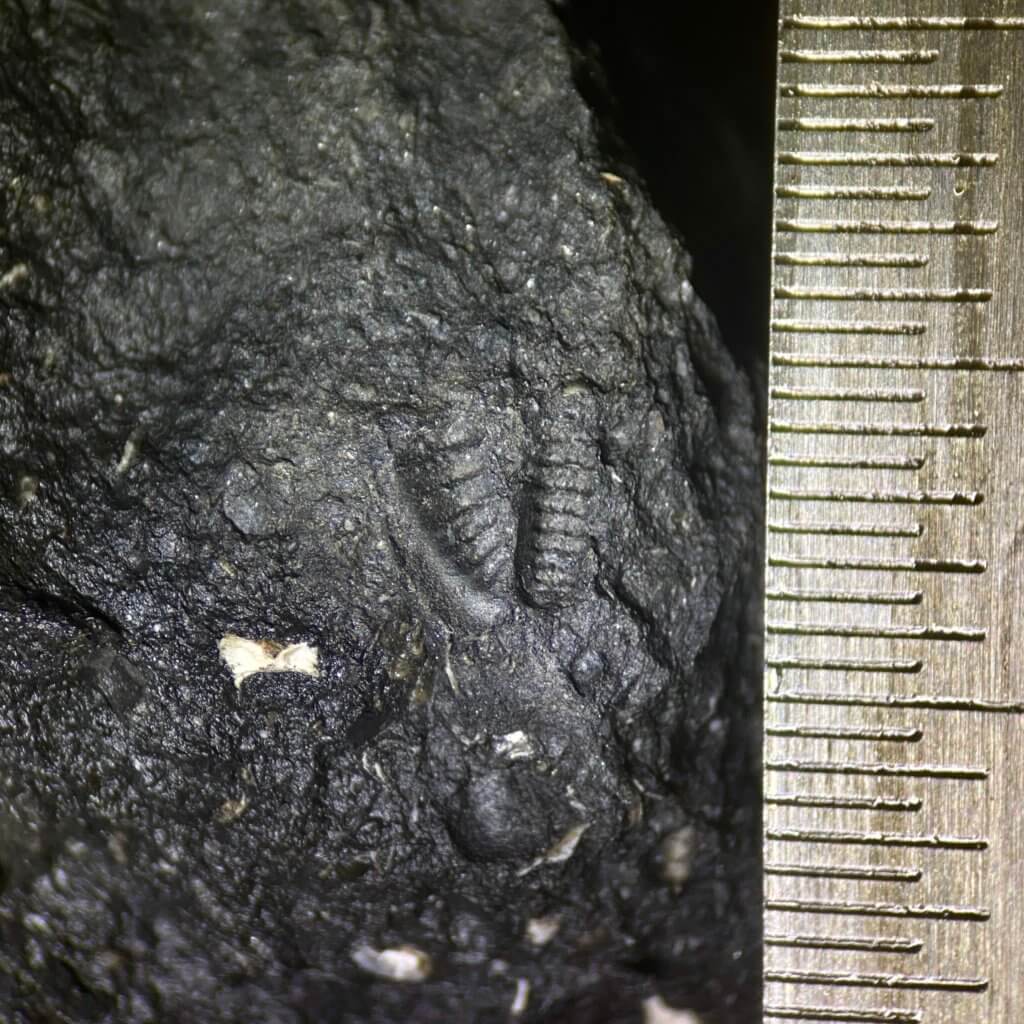
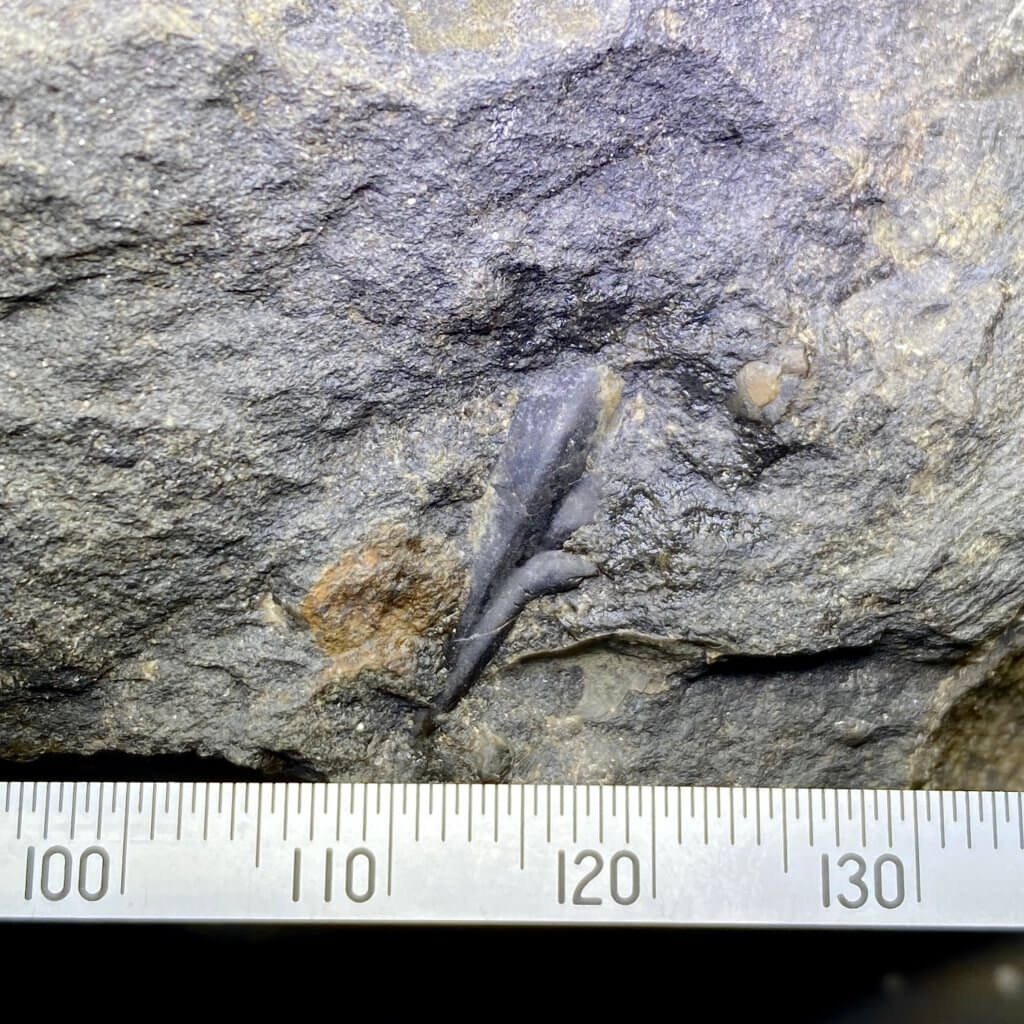
Late Pennsylvanian Trilobites Specimen Posts
- Specimen CG-0094 – Trilobite Free Cheek Genal Spine
- Specimen GC-0040 – Trilobite pygidium
More Pennsylvanian Trilobite Information Online
- Order Proetida – Sam Gon III, a Guide to the Orders of Trilobites
- 1970, Pabian, R.K., Record in Rock: A Handbook of the Invertebrate Fossils of Nebraska
References
- Brezinski, D.K., Sturgeon, M.T., Hoare, R.D., 1989, Pennsylvanian Trilobites of Ohio, Report on Investigations No. 142
- Shimer, H.W, Shrock, R.R., 1944, Index Fossils of North America, P. 637, 645, 648



